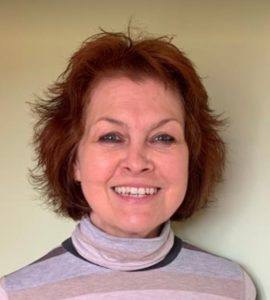Appreciating the diversity of the neurodiverse

Naomi Fisher, Caroline van Diest, and Debbie Spain presented the results of research they carried out over the past year with Marguerite Leoni and Henna Patel. The session was entitled EMDR and Autism: Research Findings and Future Developments.
The workshop was open to those who participated in the study and to anyone interested in EMDR and autism. It was clearly in demand; all available places for this two-hour online Association-credited event were filled within moments. We were to experience a presentation without a wasted word, delivered at a comfortable yet captivating pace. The session was skilfully pitched so that the content would pique the interest of all participants and reflect the diversity of the client group.
Van Diest began with an overview of autism, listing the many challenges that autistic people face in everyday life. The trauma experienced by this group has been under-researched, she said, and this was part of the rationale for the formation of the research team to gather ideas from practitioners about using EMDR with autistic people. The aim was to develop an evidence base for good practice when working with this group.
A well-timed video, Sometimes I Think I’m Better, created by autistic individuals, set the scene.
For their study, Using EMDR with People on the Autistic Spectrum (EPAS 1 & 2), Fisher and colleagues recruited internationally for participants with varied proficiency in EMDR and in working with autism.
Findings
EPAS 1 drew together ideas from the 103 participants about using EMDR with this client group via a Delphi Survey which gathers information from experts in the field. The technique allows researchers to garner the opinions of experts, while avoiding the disadvantages of ‘group-think’ and group dynamics where individuals might dominate the discussion. The process ideally results in the range of answers decreasing such that opinions converge towards consensus.
Fisher and Spain presented the findings. General adaptations included the reinforcement of clinical practices that would be beneficial for any client group. For example, the researchers stressed the value of normalising a client’s experience, being flexible and creative, using clear language and checking understanding. Warmth and respect for the client group were evident as we were prompted to be open to learning from the client and to celebrate each person’s uniqueness. The findings reinforced the need for relevant supervision by supervisors who are knowledgeable about autism, trauma and neurodevelopmental conditions.
Most therapists identified that – at least sometimes – they were:
- more directive
- asking about special interests
- using the Flash Technique
- sharing treatment plans in advance
- using storytelling
- ready to reformulate and to shift focus
- offering sessions at the same time and place
- taking a progressive approach and focusing on building positive self-image and coping strategies.
Respondents acknowledged that during EMDR processing, they would ask for all the usual elements but if that information was not forthcoming, they would go with whatever was given. Shorter sets were generally preferred, as was the use of interweaves that are more direct. There was agreement also that there might be less generalisation in this client group. Respondents also acknowledged the need to be alert to sensory overload and to rely more on the client’s functioning as a measure of progress.
It was stressed that autism-specific knowledge should be part of the formulation.
Need for up-to-date knowledge
The diagnosis of autistic spectrum conditions (ASC) has increased almost nine-fold over the past 20 years. Diagnostic criteria have changed and in many cases ideas about what it means to be autistic may be outdated. Happily, our increasing exposure to neurodiversity means that we are less prone to pathologising those with ASC. At the same time, people with ASC often experience hostility from others and questioning clients about such experiences is essential.
In EPAS 2, a semi-structured qualitative interview was used to ask 24 of the original participants which of the above adaptations they used. Among the suggestions made was the need to be alert to individual differences; it is all too easy to generalise the experiences of all autistic people, clearly as misguided as assuming that all clients are the same.
Practitioners were warned off making assumptions as to whether autistic people could respond to EMDR. “Sometimes you don’t always get those subtle cues, that social feedback from the person”, and “you may not get as much nonverbal feedback as you would with other clients….maybe it is more subtle or muted….but they’re still able to process. It might just not be as obvious to you”. Many participants agreed about the need to communicate carefully with autistic clients: “They need to feel that you can support them to change in the ways they need to, but be reassured that you’re not going to ask them to do things they can’t do”.
Van Diest stressed that understanding the experience of living with autism is as important as understanding individual differences and diagnostic criteria. It is especially important to consider how the world responds to people with ASC and how this affects their development.
We were directed to leave the session at least with the understanding that:
- Communication is key
- We should strive to be as flexible as possible
- Individual differences are important
- Autism & neurodiversity training is essential.
Rather than providing a protocol for working with autistic people, we were guided to adapt the Standard Protocol in the way that works for the individual present.
Not only those who currently work with autistic clients would benefit from this presentation, any of us might welcome clients who do not yet have a diagnosis and need to be aware of their individual wants and needs.
The session ended with links to resources, books and other useful knowledge and experience to tap . It felt like a valuable, collective experience, hearing what the community know and have found effective. We await publication with enthusiasm.




